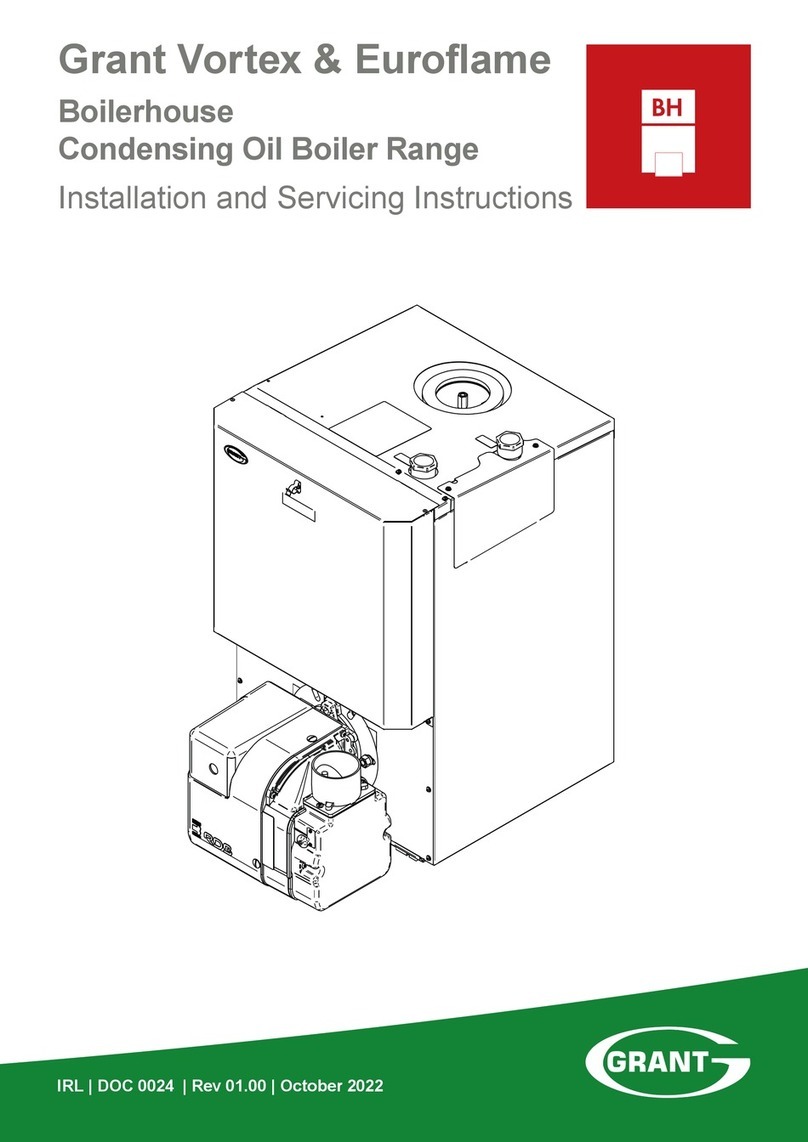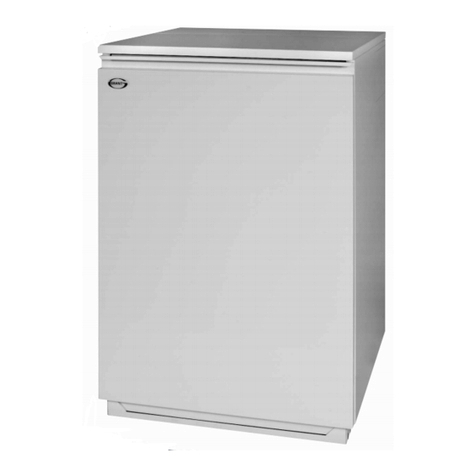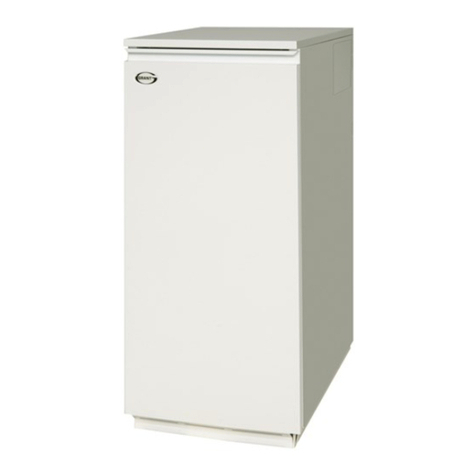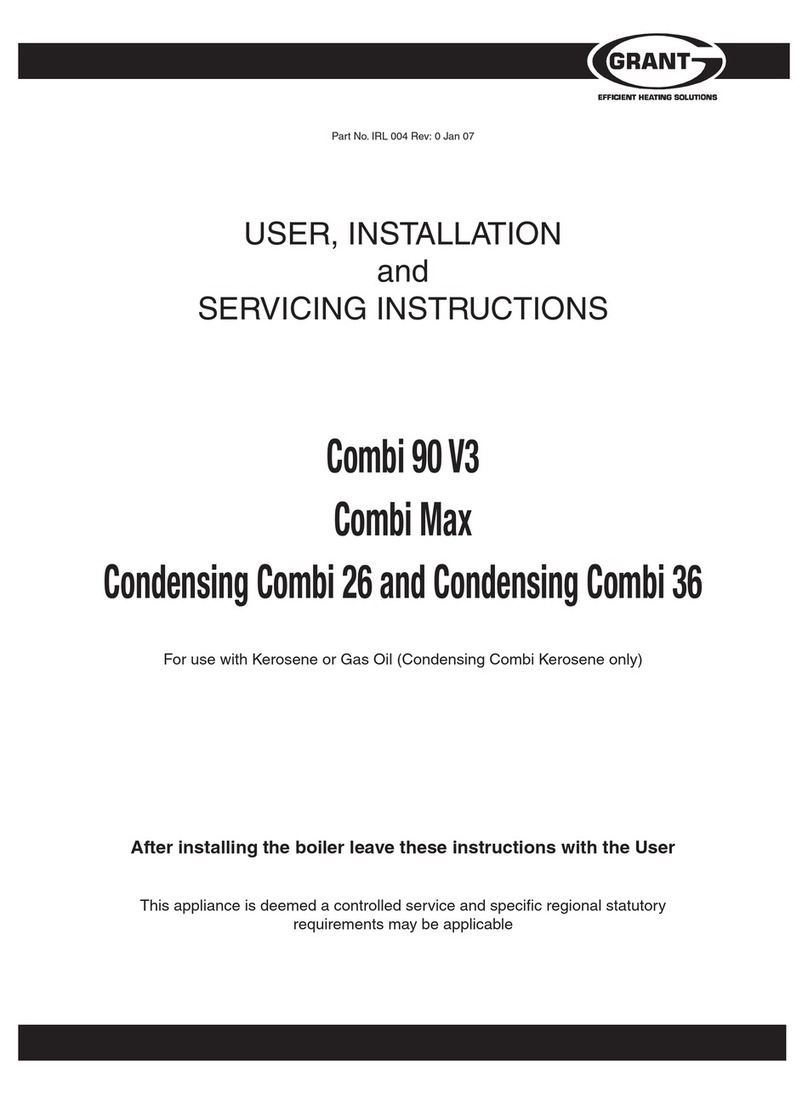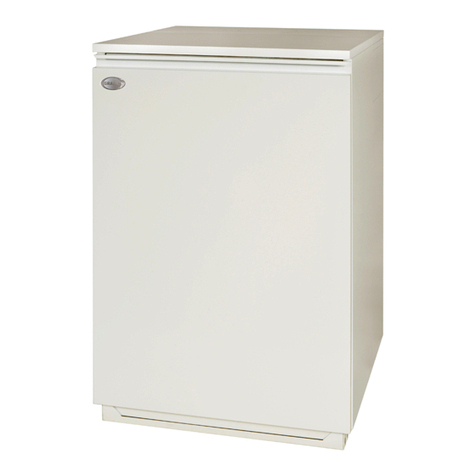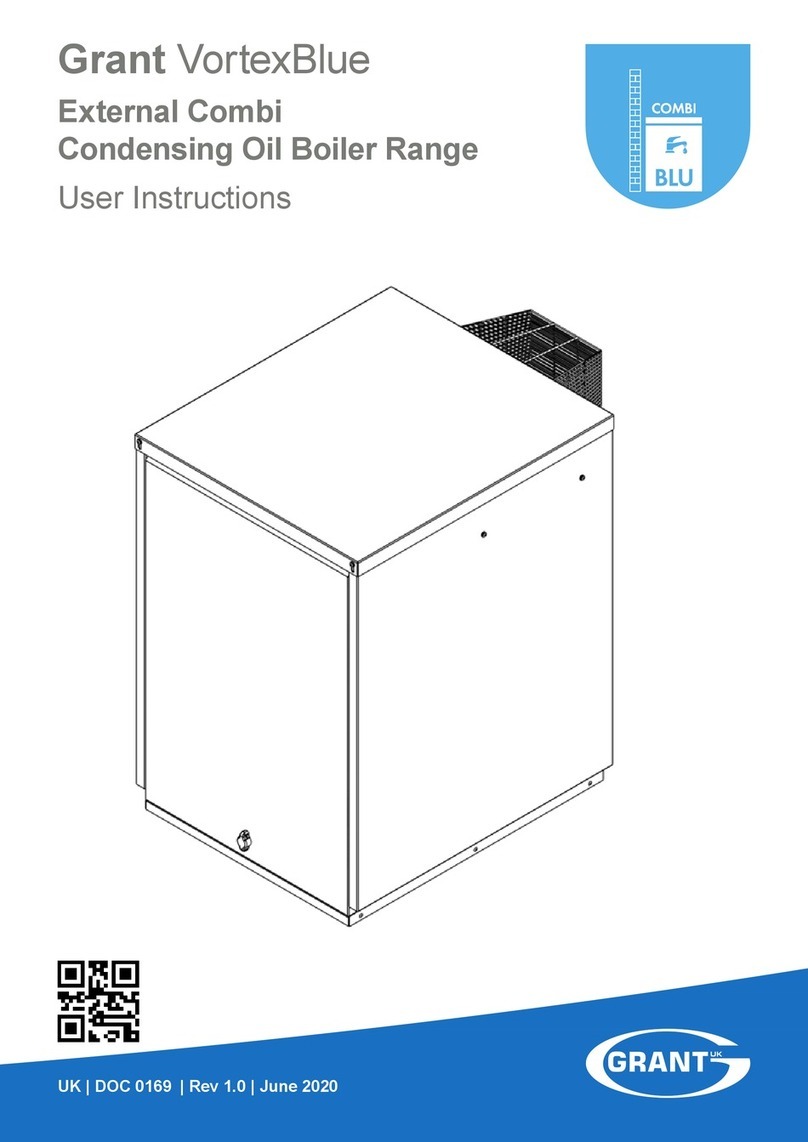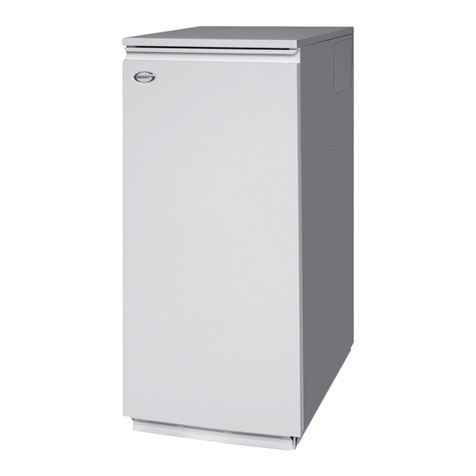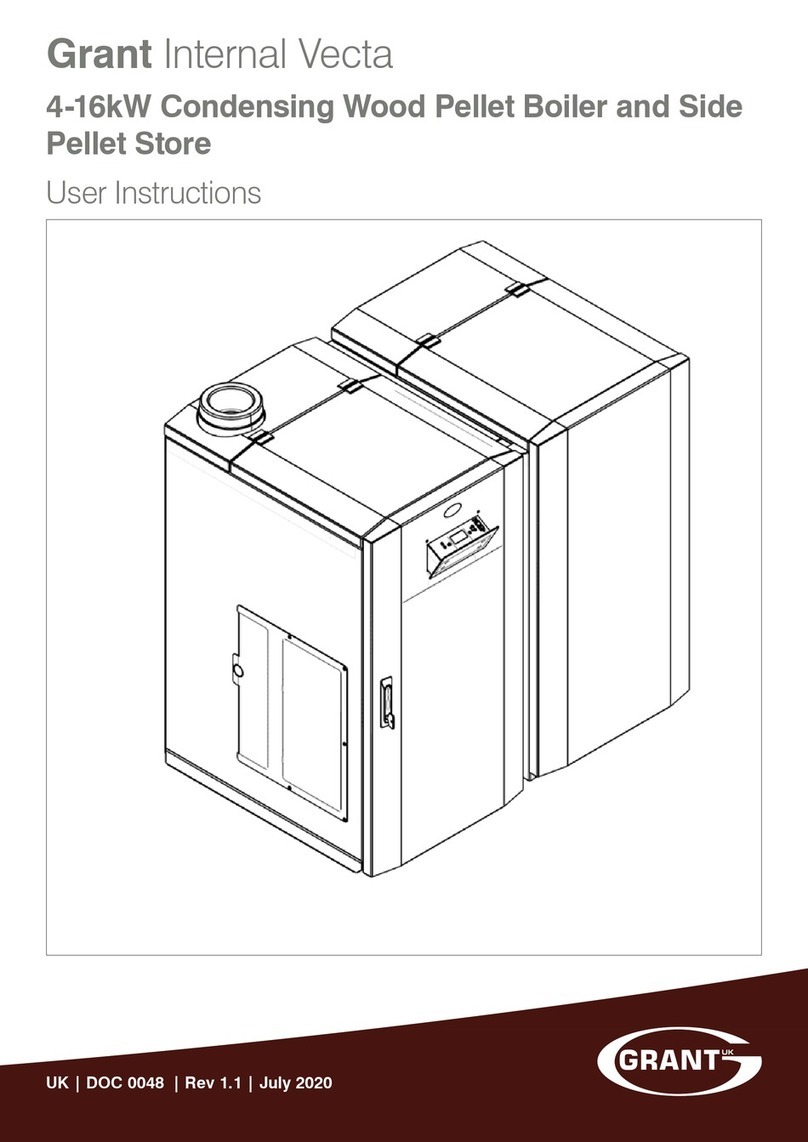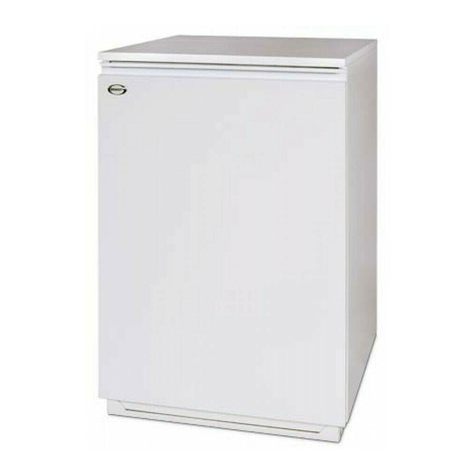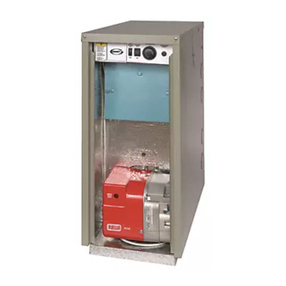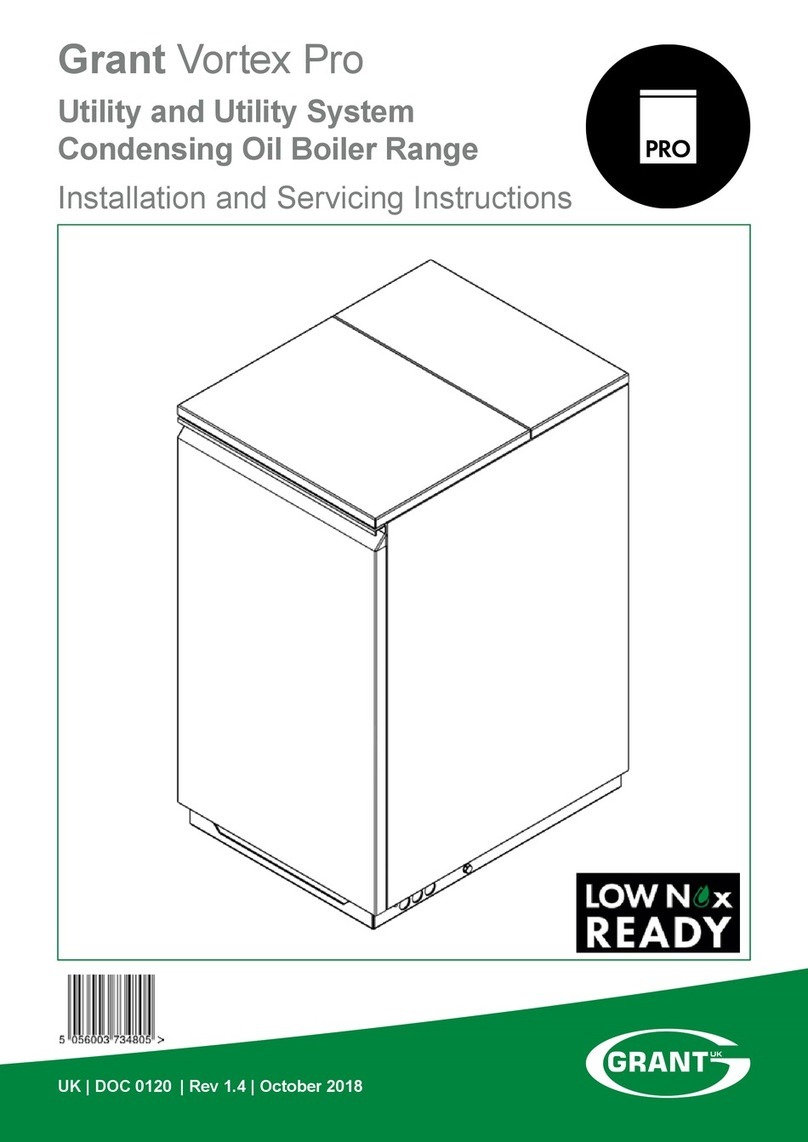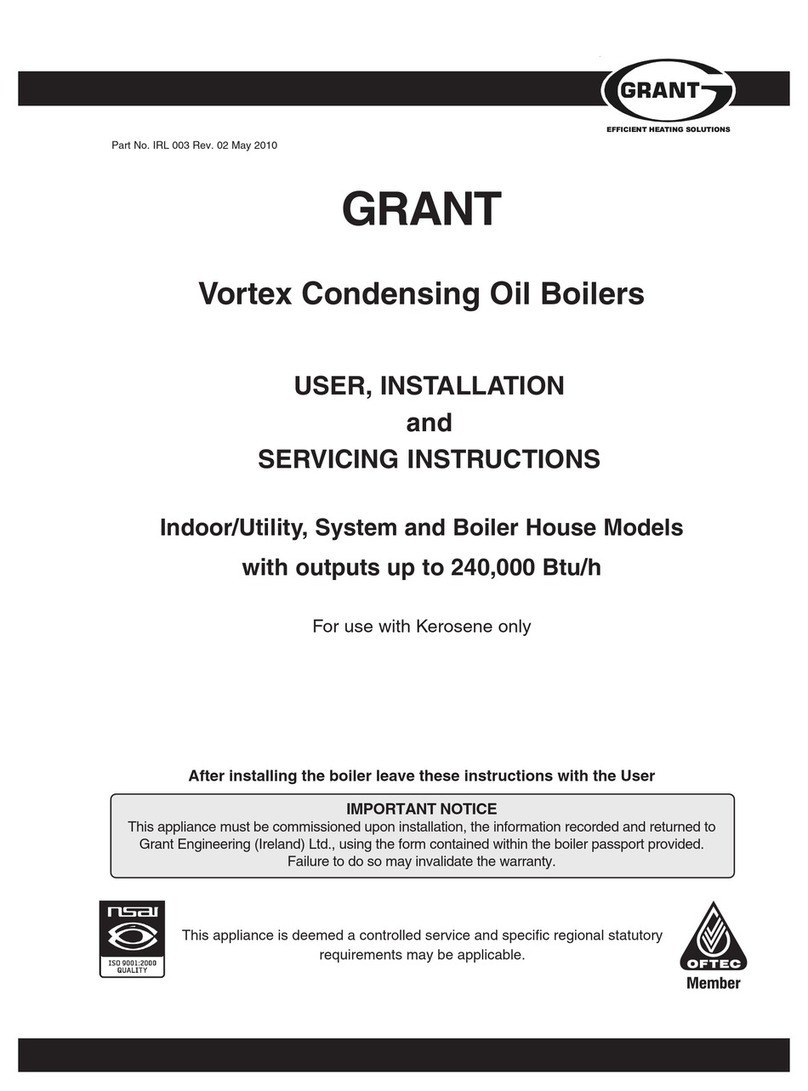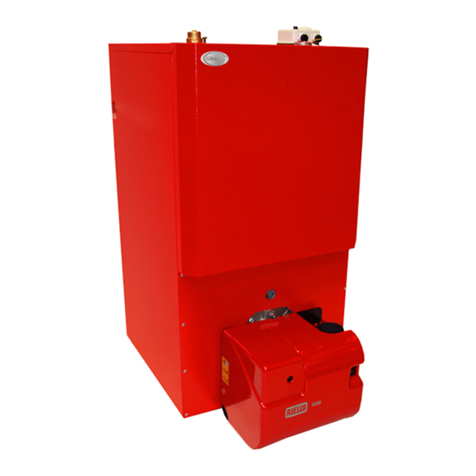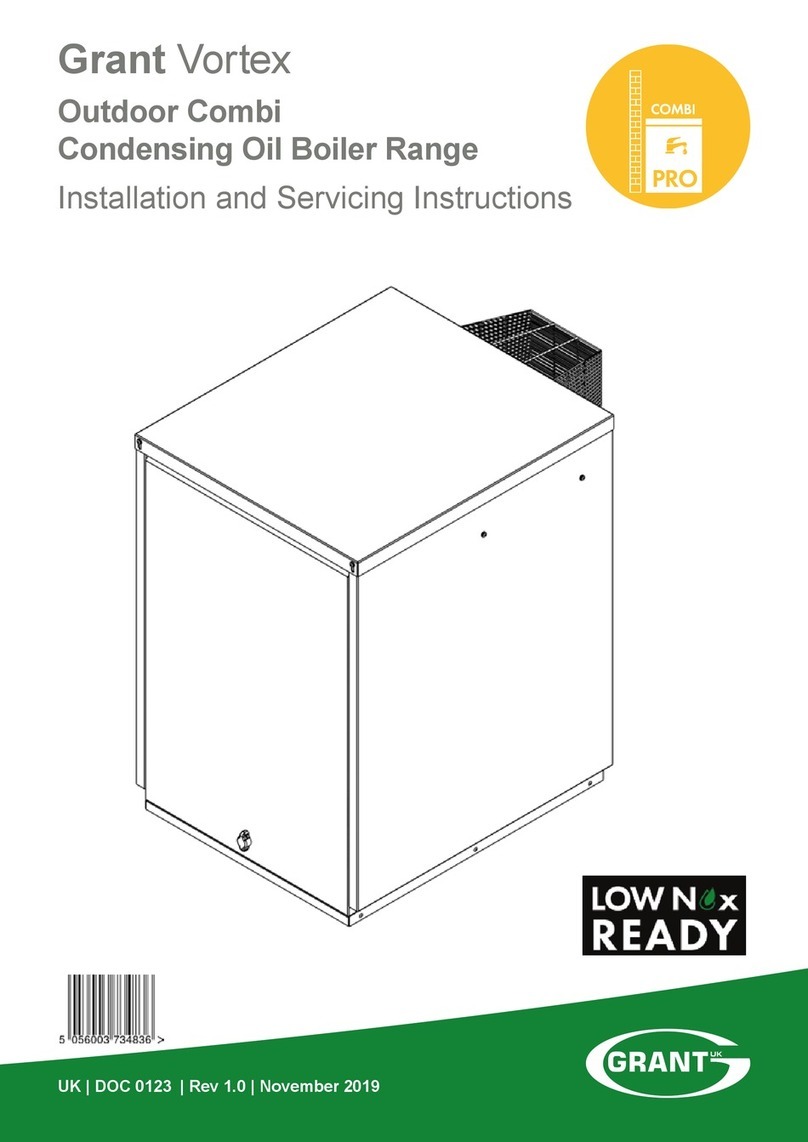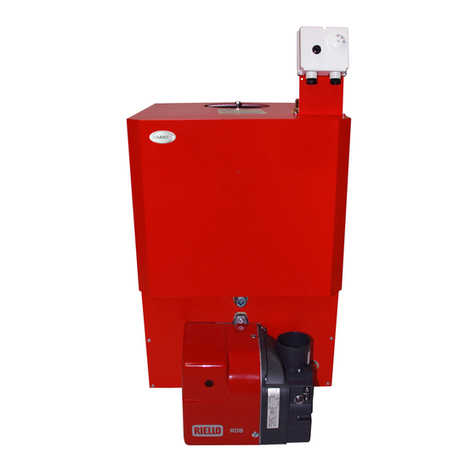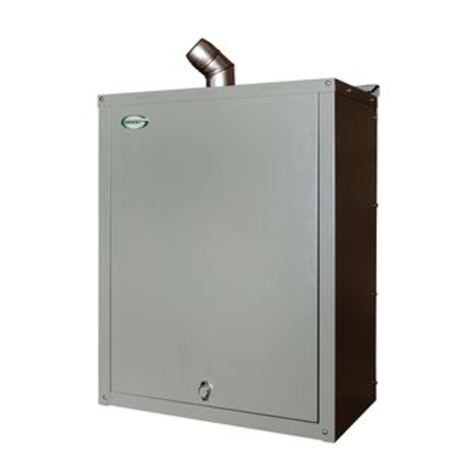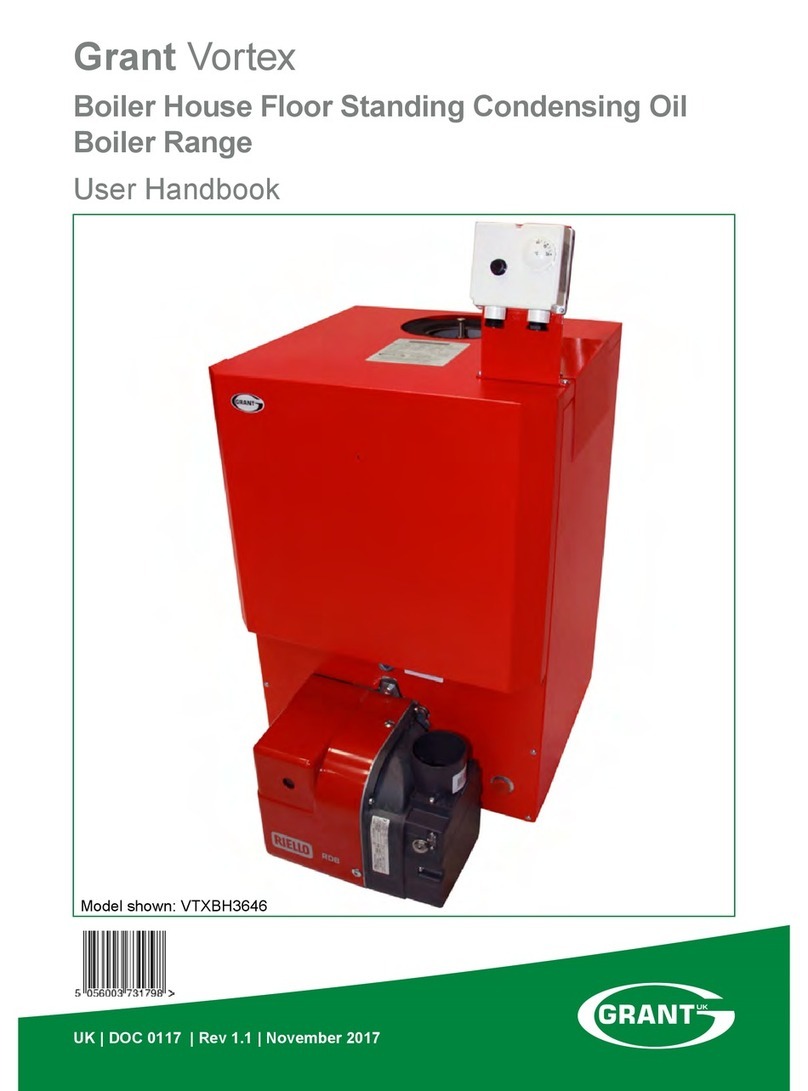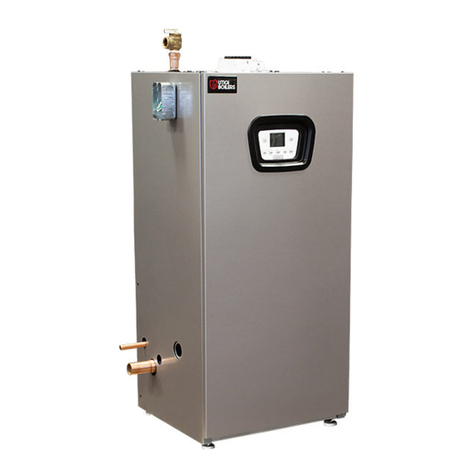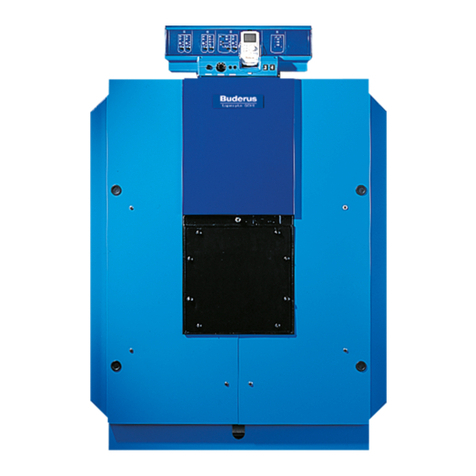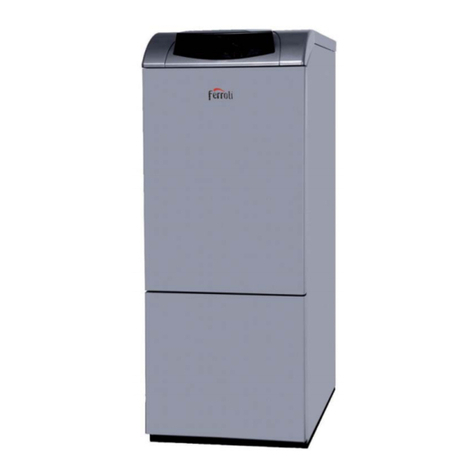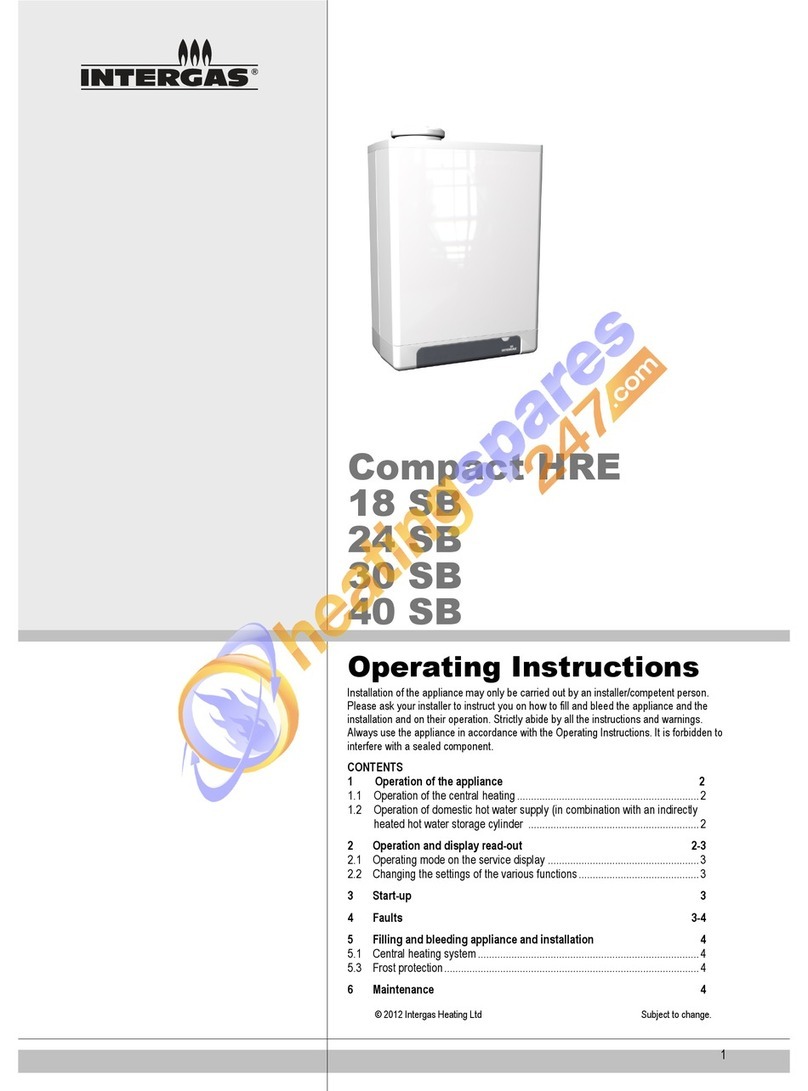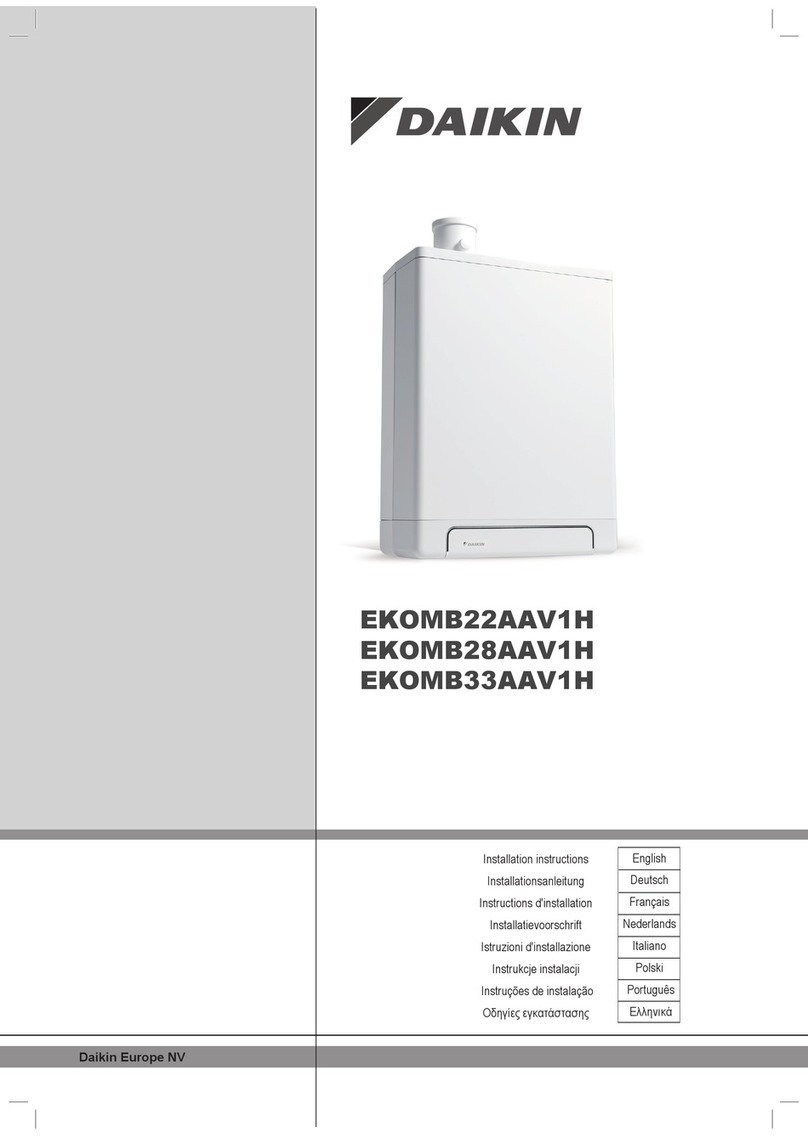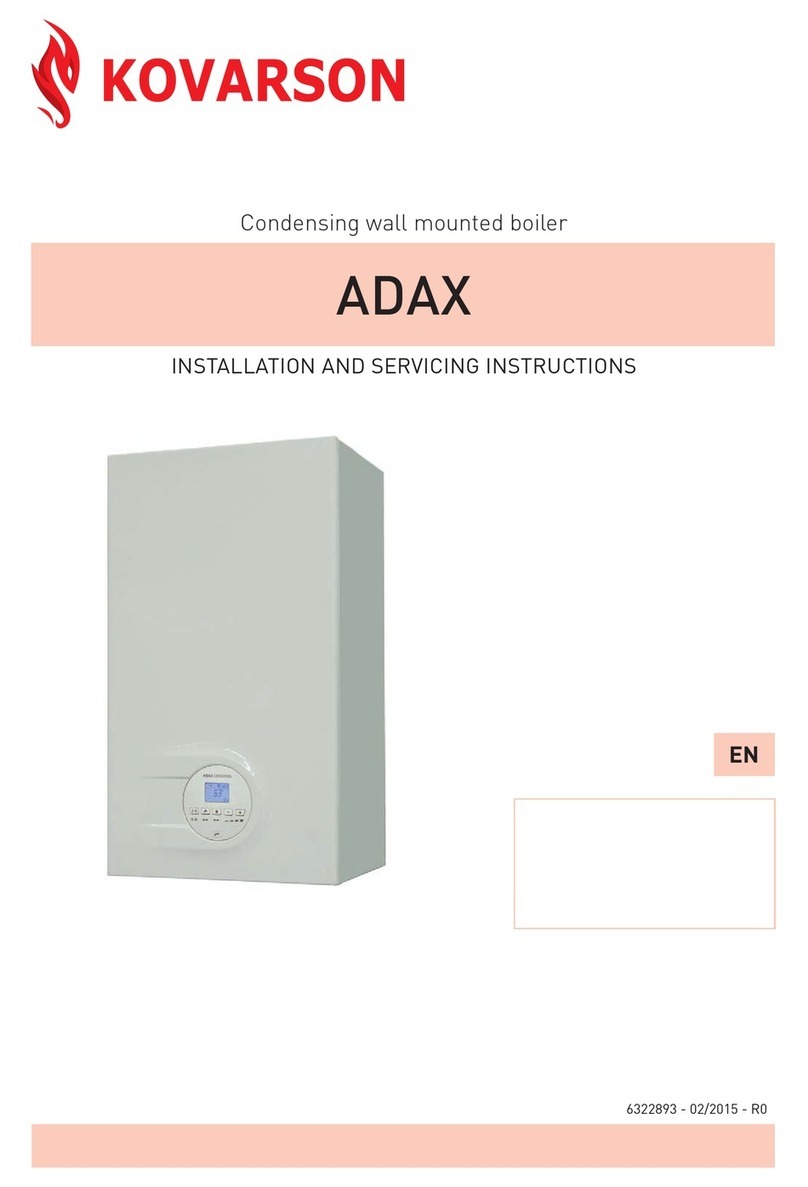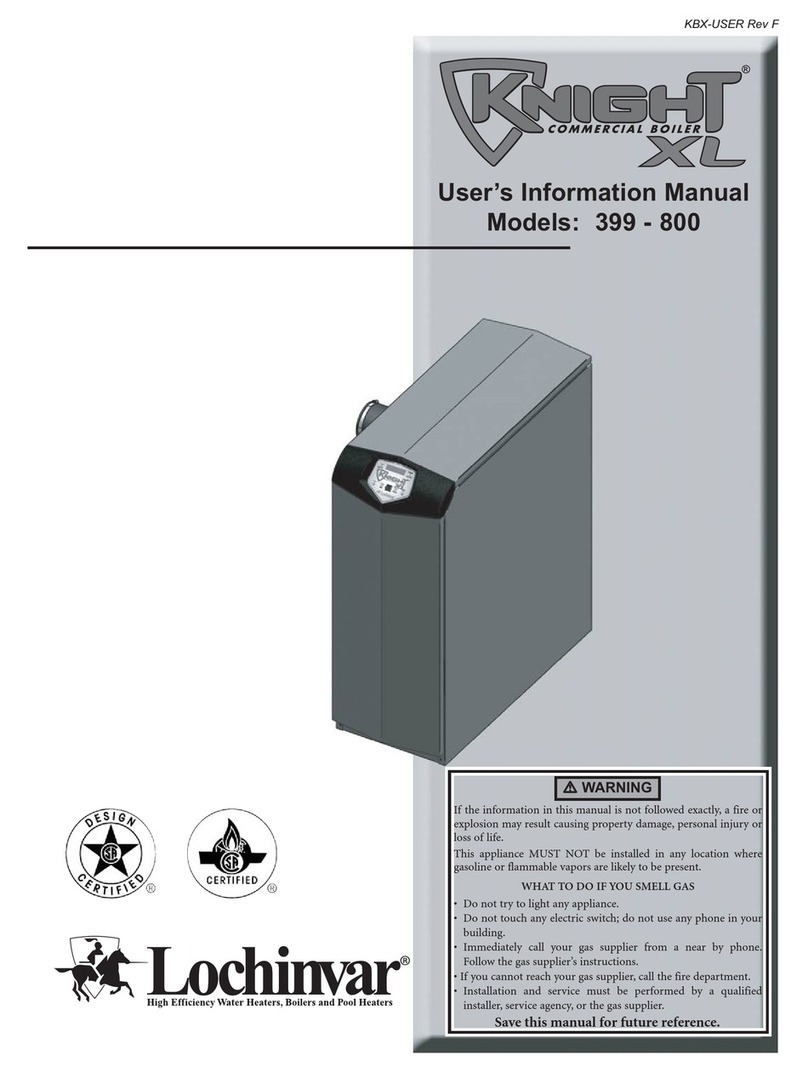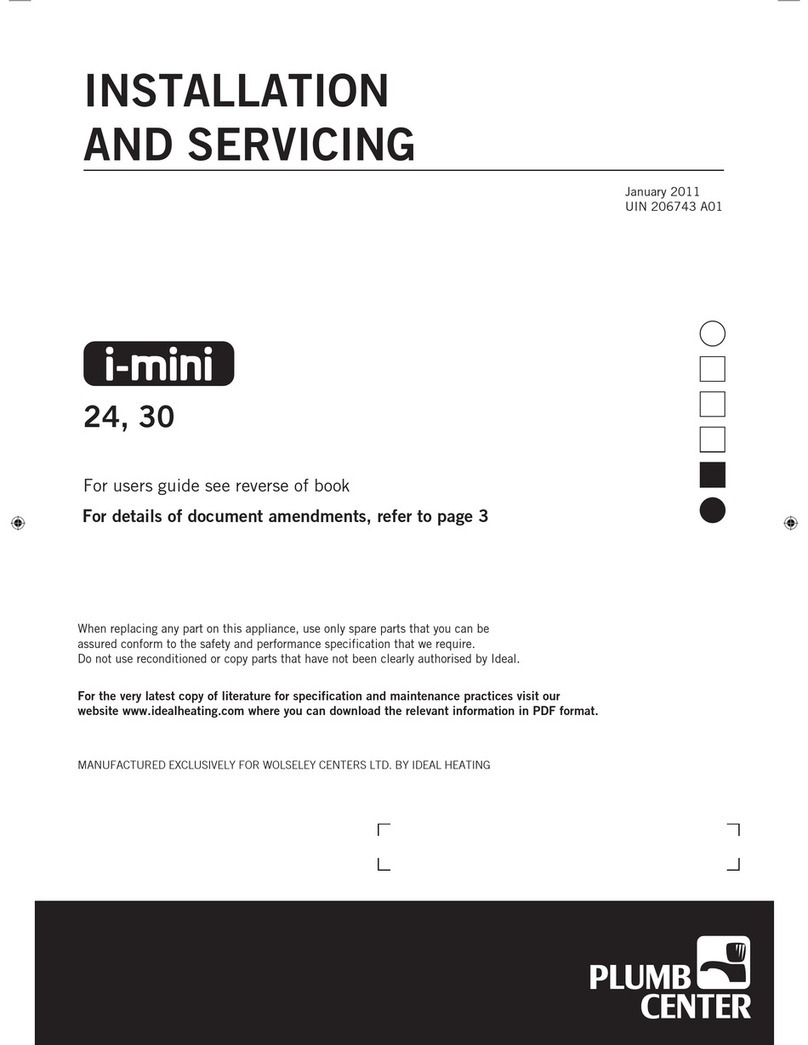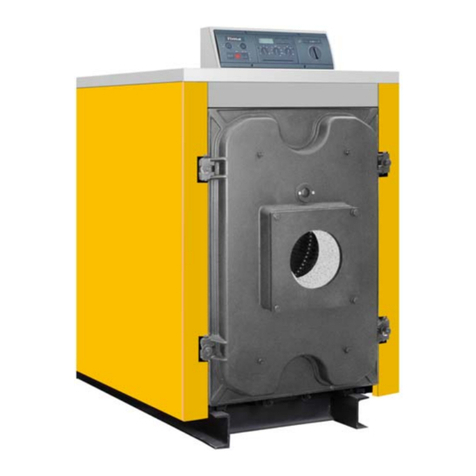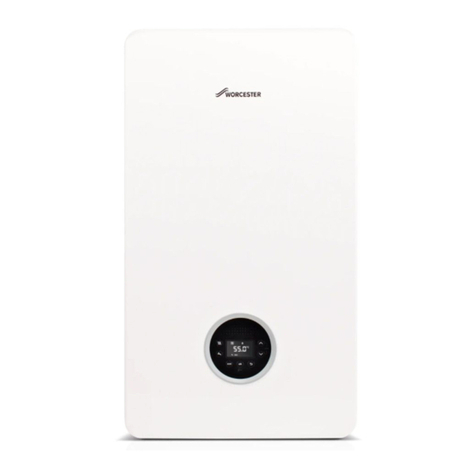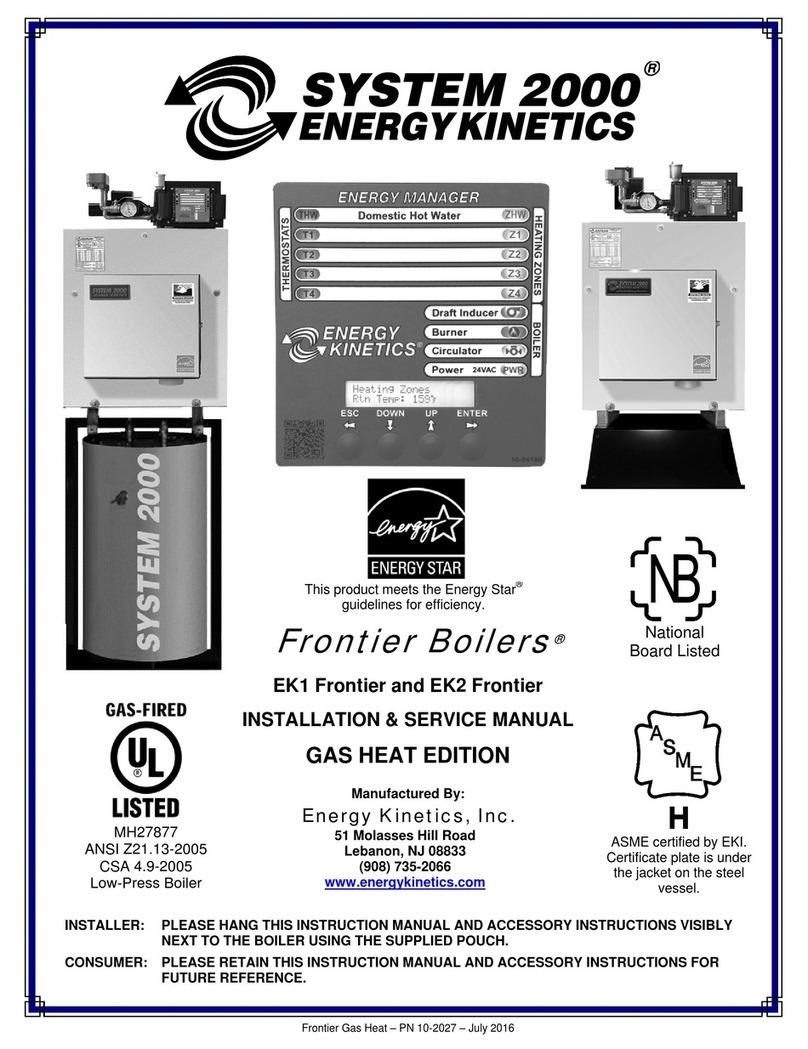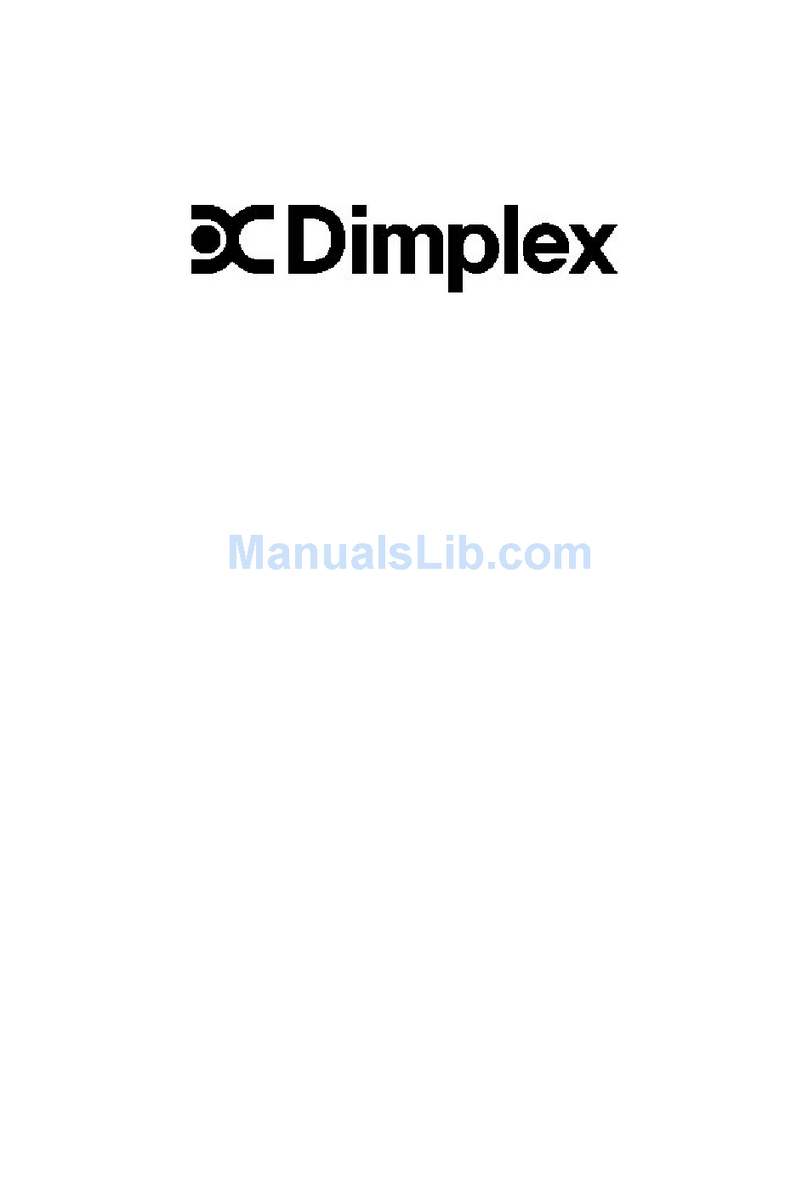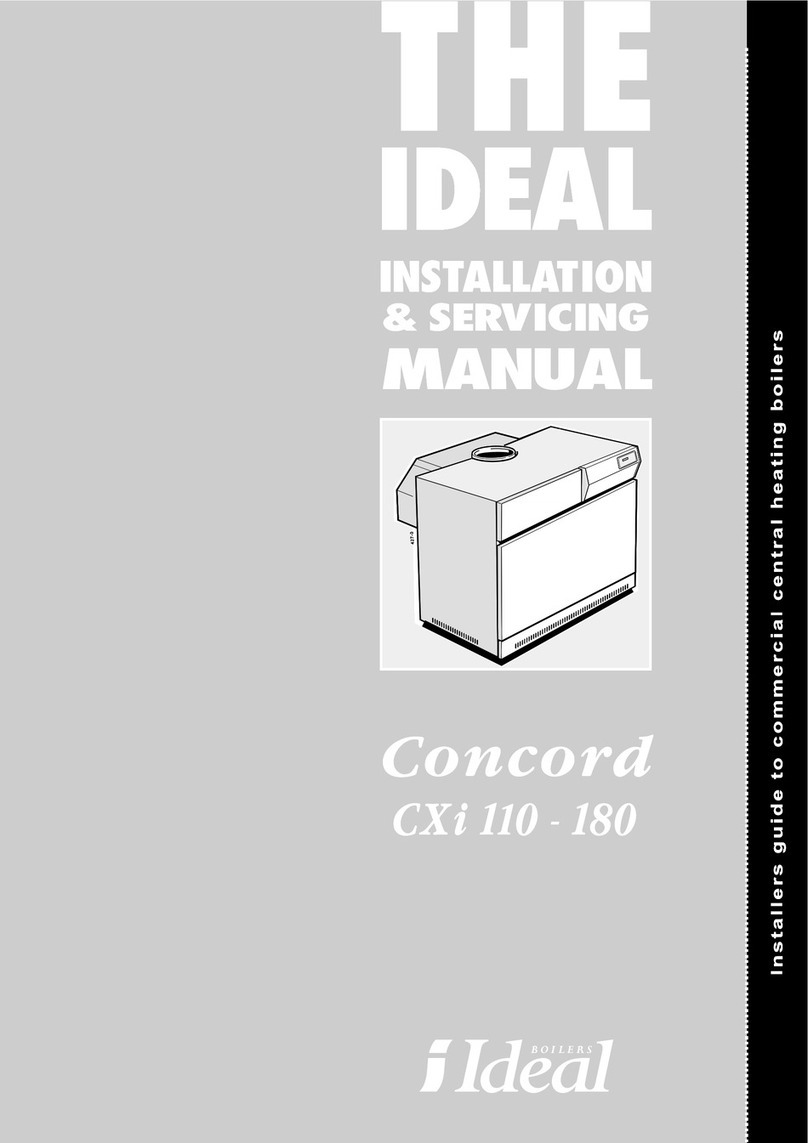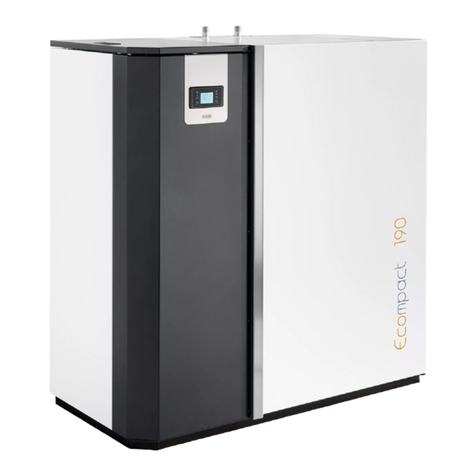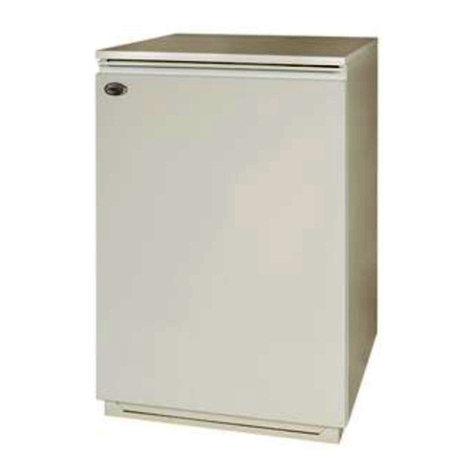
Page 7
3.2 HOW TO FILL OR TOP UP YOUR
SEALED SYSTEM
(filling loop)
Figure 3-2: Sealed system filling loop arrangement
To fill or top up your heating system, proceed as follows:
1. Check the boiler and circulating pump are switched offand
any air vents on the system are open.
2. Connect the filling loop* between the two filling valves.
3. Open the filling valve on the mains water end of the filling
loop (the valve is open when the operating lever is in line with
the valve).
4. Open the filling valve on the heating end of the filling loop to
allow water to flow into the heating system (the valve is open
when the operating lever is in line with the valve).
5. When the pressure gauge shows the required cold system
pressure (refer to Section 3.1) close the filling valve on the
heating system.
6. Vent each radiator to remove any air that may be trapped
in them. Start with the lowest radiator in the system, i.e
downstairs.
7. Locate the circulating pump(s) and vent the pump(s) by
following the manufacturer’s instructions.
8. Now, check the system pressure on the system pressure
gauge. If necessary, re-open the filling valve on the system
until the gauge shows the required pressure. Take care not
to over-fill!
9. Finally, close both filling valves and disconnect the filling loop
at one end only. Take care, as the filling loop may contain
water!
*If you cannot locate the filling loop, please contact your installer.
! NOTE !
If the system has been drained down or requires frequent
topping up, then the level of inhibitor and/or anti-freeze will
need to be checked by your installer.
! WARNING !
Only add water to the system when the system is cold and
the boiler is switched off.
Do not overfill
3.3 EXPANSION VESSEL
The expansion vessel should be checked annually, as part of your
annual service, to ensure that there is a 1.0 bar air charge in the
vessel. Failure to do this will invalidate the boiler guarantee. Refer
to Section 1.6 for further details regarding servicing.
! NOTE !
The pressure gauge on the system does not show the air
charge pressure in the expansion vessel.
! NOTE !
In order to properly care for your Grant boiler, an annual
service by a compentant person should always be
undertaken.
3.4 VENTILATION
Unless your boiler is installed with a balanced flue system*, you
will require ventilation openings in your property to provide your
boiler with a fresh supply of air in order for it to fire.
Any ventilation openings in the property provided by the installer
must not be obstructed.
You should periodically check that they are clear.
Do not attempt to ‘box in’ the boiler or build a compartment around
it before contacting your installer.
Do not place any combustible material around or on the boiler or
flue pipe.
*Balanced flue systems have an air intake system incorporated
into their design, and provide the boiler with fresh air. This
removes the need to have ventilation openings installed in your
property for this purpose.
3.5 FLUE TERMINAL AND
CONDENSATE DISPOSAL
FLUE TERMINAL
If your boiler flue system has a terminal on the outside wall, make
sure that the terminal is not damaged or obstructed in any way.
A wire mesh guard is required to cover the terminal if the terminal
is less than 2 metres above ground level. If you think one is
required, contact your installer.
You should periodically check for and remove any obstructions,
e.g. cut back any bushes that may have grown over the terminal.
Do not stack anything against or in front of the terminal.
In severe weather conditions, check that the terminal does not
become blocked by snow or ice.
‘PLUMING’ FROM THE FLUE TERMINAL
Whilst operating, it is quite normal for the boiler to produce a white
plume of condensation vapour from the flue terminal.
This is due to the high efficiency of the boiler and may be
particularly evident with low outdoor temperatures.
CONDENSATE DISPOSAL
During the operation of the boiler, condensate is produced from
the flue gases and this is drained to a suitable disposal point
through the plastic waste pipe on the left hand side of the boiler.
The condensate drain must not be modified or blocked.
Blockage of the condensate drain, caused by debris or freezing
can cause automatic shutdown of the boiler. If you suspect
freezing and the pipe run is accessible, you can try to free the
obstruction by pouring hot water over the exposed pipe and
clearing any blockage from the end of the pipe. If this fails to
remedy the problem, you should contact your service engineer.
Section 3: Caring for your Boiler













